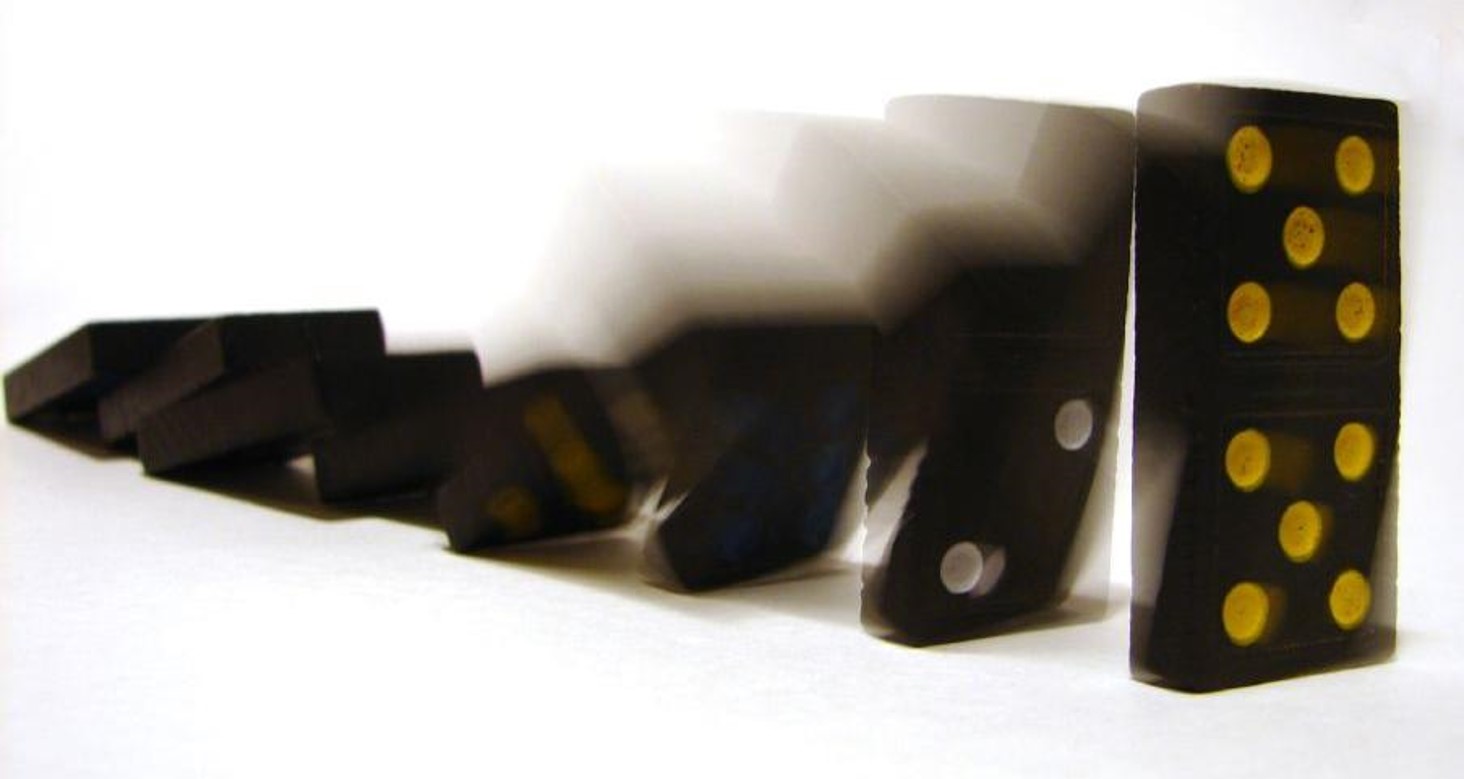Current e-Journal
-

June 20, 2022

How to Create Cause-and-Effect
In this week’s Systems Change Newsletter…
• Invitations & Announcements
• Catalytic Thinking Exercise: How to Create Cause-and-Effect
• Resources to Further Your Practice
• Story of the Week: Catalytic Thinking in ACTION
Invitations & Announcements:
Community Engagement Planning via Catalytic Thinking
On Monday, June 27, Creating the Future will continue its community engagement planning efforts, applying Catalytic Thinking to this crucial topic. If you’re thinking about engagement for your own efforts, or if you just want to watch Catalytic Thinking in action, join us! Information is here.
Catalytic Thinking Exercise:
How to Create Cause-and-Effect
Several years ago, a group of Creating the Future’s fellows were applying Catalytic Thinking to a project. After identifying the best possible outcome, they created a map of causes and conditions that would lead to that result.
That map took up an entire wall. Arrows led from each cause to its effects, and then to whatever that effect would make possible, and so on. The map showed all the interconnections that could be activated, making the ultimate goal seem not just likely, but inevitable.
Suddenly one of the participants jumped up with excitement. Pointing to the first steps that would trigger that chain reaction, he said,
“It doesn’t matter which action we start with. Because every one of those levers will trigger what needs to happen next!”
That is the power of working with causality.
It’s like laying out a complicated pattern of dominoes. Those rows of tiles are actually rows of interconnected causes-and-effects. By toppling the first tile, we are setting causality in motion, all aimed at the goal of toppling that final domino.
When you have diligently mapped out all the dominoes that will lead to your own ultimate goal – whether that goal is about healthcare or homelessness or a community that values all forms of artistic endeavors – your power lies in the momentum that creates that chain reaction.
Our job as change makers is to set up the dominoes, and to then topple that first one.
Then all you need to do is to knock down that first domino!
As education activist Ursula Wolfe-Rocca noted on Twitter earlier this year,
“It can be overwhelming to take in all the injustices of the moment; the good news is that they’re all connected. So if your little corner of work involves pulling at one of the threads, you’re helping to unravel the whole cloth.”
And so, as we consider the breadth and depth of the problems our world is currently facing, our job as change makers is to set up the dominoes, and to topple that first one.
Try this
Creating a roadmap of cause-and-effect is easier than you might think. Starting with your ultimate goal in mind, you will be asking about what needs to be in place before that goal can be realized.
And because it is PEOPLE who will make those things happen, your questions will be about all those people. Those questions might include…
- What would people need to know, for your goal to be realized?
- What would people need to feel?
- What would people need to be assured of?
Example:
Let’s say your goal is to gain support for reducing traffic in your neighborhood. In order for everyone to work together to address that traffic…
What would your neighbors need to know? (Perhaps the options available for reducing traffic? Or what will be asked of them?)
What would they need to be assured of? (Perhaps that improvements won’t be too disruptive? Or that their kids will be safe?)
What would they need to feel? (Perhaps they would need to feel included? Or confident that various options will work?)
From there, you can ask again. What would it take for your neighbors to feel included? What would they need to know? What would they need to be assured of? Etc.
Walking backwards, possible actions will become evident – those first dominoes for you to topple.
And as simple as this seems for reducing traffic in your neighborhood, you can ask these same questions about ensuring everyone in your community has a roof over their heads. Or that folks are making a living wage. Or that your town’s drinking water is safe.
From this simple example, you can see why the first tenet of Catalytic Thinking is this: Our power to create powerful results lies in our power to create favorable cause-and-effect conditions towards our dreams.
Resources to Further Your Practice:
- WATCH: This short video demonstrates what it looks like to reverse engineer the future you want to create. Watch it here…
- READ: This article in Stanford Social Innovation Review has a great example of causality in action. Read it here…
- WATCH: Hildy’s TEDx talk has a great example of what this process looks like in action. Watch it here…
Story of the Week: Catalytic Thinking in Practice!
This week’s story comes from Norah Kennedy, who participated in our succession planning practice cohort. Norah is the Executive Director of an emergency shelter for women escaping abuse and/or homelessness. She has been in leadership in the community benefit arena for 30 years, and recently began a leadership coaching practice
Since our practice cohort, I am using Catalytic Thinking in everything I do.
Specific to our succession planning, we began with the exercise of creating the future we wanted to see - for our clients and staff, families (our own and our clients), our many community partners, colleagues and other ED’s within the sector, neighbours and ourselves. Then, we reverse engineered that future vision, identifying the pathways that lead to that future, understanding what the necessary conditions are that need to exist to support those pathways. We are now beginning to create the action plan that will culminate in a thoughtful and complete plan.
That succession planning was actually one part of a larger exercise setting strategic priorities for the year. After my time with Creating the Future, we applied Catalytic Thinking to each of those priorities - creating the vision, and then reverse engineering the pathways that will determine what actions will we take. Each time, it was a highly successful and engaged process, as we created a roadmap to our future.
Got a Catalytic Thinking story to share with our readers? Let us know here!
Help Keep Our Programs Freely Available
Creating the Future’s eJournal is free. And there are no financial barriers to our classes – tuition is whatever folks can afford. Because we never want money to stand in the way of people learning.
If you value our content and our approach, please donate here – and please consider becoming a monthly supporter of our work.
eJournal Archives:
If you’re new to our eJournal, or just want to remind yourself of past practice exercises we’ve shared, check out our eJournal archives here.
SUBSCRIBE
to get this e-Journal
Creating the Future is a 501(c)(3) tax exempt organization in the U.S.A


